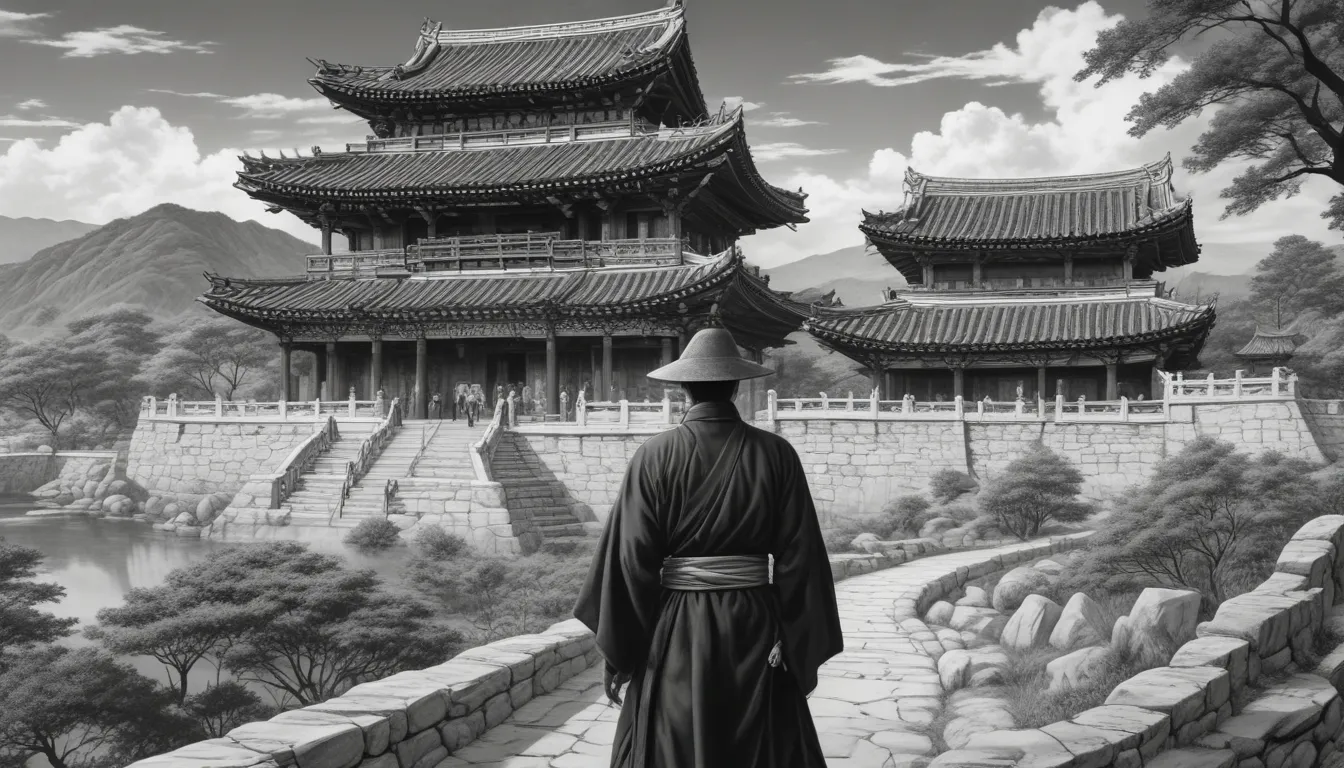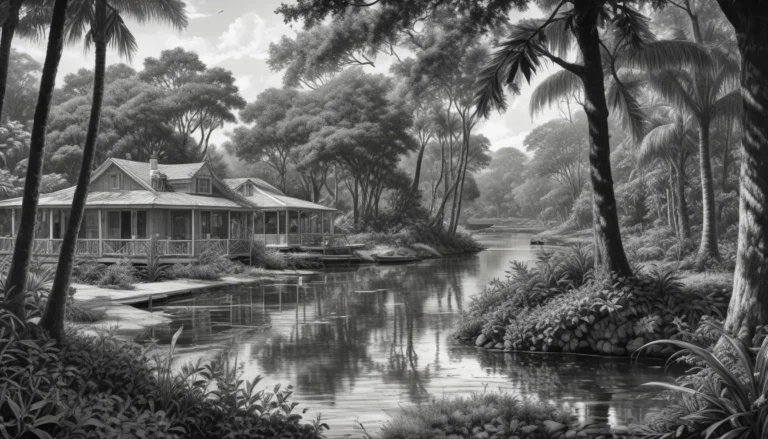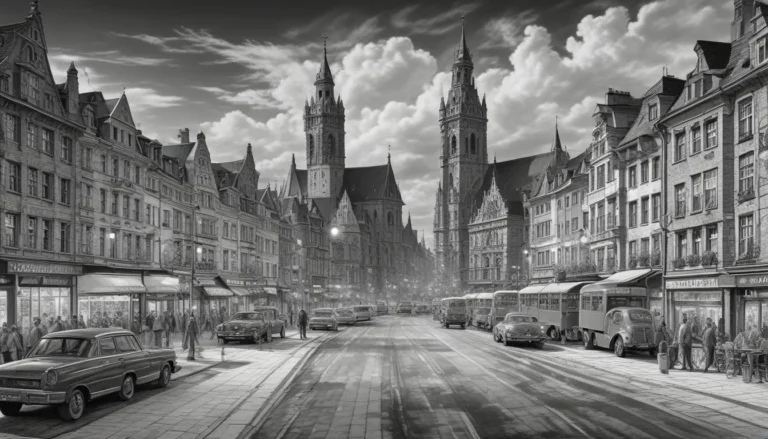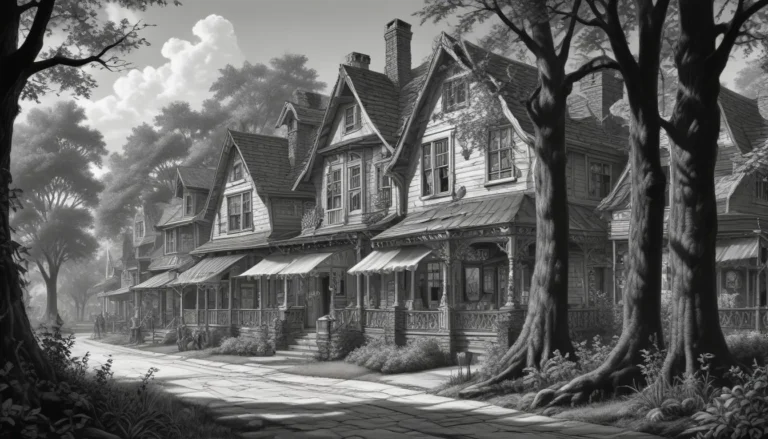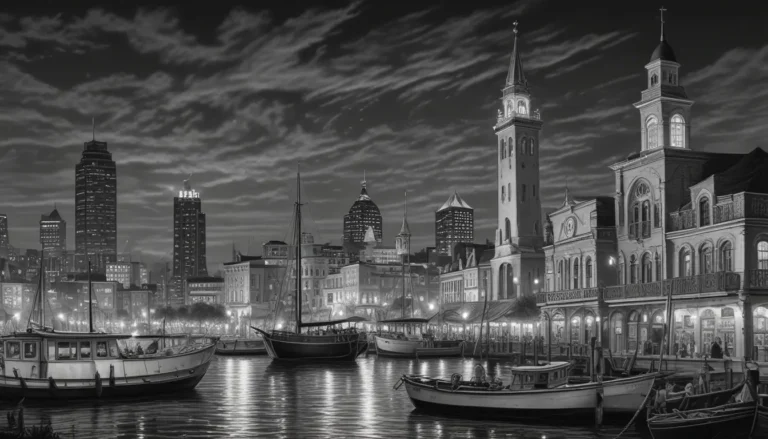The images in our articles are for illustrative purposes only and may not exactly match the content. They are intended to capture your interest and complement the text, not to replace it.
Are you ready to embark on a captivating journey through the rich history and cultural heritage of Gyeongju, South Korea? Known as the “Museum Without Walls,” this ancient city offers a unique blend of ancient and modern experiences that will leave you awestruck. From breathtaking UNESCO World Heritage Sites to mouthwatering cuisine and vibrant traditional arts, Gyeongju is a treasure trove waiting to be explored.
Unraveling the Secrets of Gyeongju
Let’s dive into 40 fascinating facts about Gyeongju that will illuminate its intriguing past, architectural wonders, and unique cultural heritage. Whether you’re planning a visit to this remarkable city or simply curious to learn more, Gyeongju promises an unforgettable experience that will enrich your understanding of Korea’s majestic history.
Gyeongju: The “Museum Without Walls”
Gyeongju is a city renowned for its well-preserved cultural heritage, with historic sites and landmarks that showcase its ancient past. From temples to royal tombs, Gyeongju is a living museum that offers a glimpse into Korea’s bygone era.
The Glorious Capital of Silla
As the former capital of the ancient kingdom of Silla, Gyeongju played a pivotal role in shaping the history and culture of Korea over nearly a millennium. Its legacy is immortalized in the city’s UNESCO World Heritage Sites and architectural marvels.
UNESCO World Heritage Sites Abound
Gyeongju boasts a wealth of historic sites, including the iconic Bulguksa Temple, the ethereal Seokguram Grotto, and the sprawling Gyeongju Historic Areas, all recognized for their exceptional universal value.
The Enigmatic Burial Mounds of Gyeongju
Over 150 royal tombs, known as tumuli, dot the landscape of Gyeongju, serving as the final resting places of the rulers and nobility of the Silla dynasty. These burial mounds are a testament to the city’s regal past.
Cheomseongdae: A Window to the Stars
The ancient Cheomseongdae Observatory, dating back to the 7th century, stands as the oldest existing astronomical observatory in East Asia. Its construction reflects the advanced astronomical knowledge of the Silla dynasty.
Nature’s Embrace in Gyeongju
Gyeongju is not only steeped in history but also surrounded by breathtaking natural landscapes. From tranquil lakes to majestic mountains, the city’s beauty serves as a picturesque backdrop to its historical treasures.
Embracing Tradition: Hanbok and Beyond
Gyeongju is a vibrant hub for traditional Korean culture, exemplified by its exquisite hanbok clothing. Visitors can immerse themselves in this cultural heritage by exploring the city’s traditional craft shops.
The Oldest Star Chart in the World
Housed in the Gyeongju National Museum is the oldest known astronomical chart, the “Cheonsang Yeolcha Bunyajido,” a remarkable artifact from the 7th century that showcases the ancient celestial knowledge of the Silla dynasty.
Anapji Pond: A Royal Oasis
Anapji Pond, an exquisite artificial pond created during the Silla dynasty, served as a royal garden adorned with lotus flowers, elegant pavilions, and mesmerizing reflections.
Keeping Tradition Alive: Traditional Crafts
From intricate pottery to delicate embroidery, Gyeongju is a treasure trove of traditional crafts that highlight the city’s commitment to preserving and promoting Korea’s rich cultural heritage.
The Thrill of the Cherry Blossom Marathon
Every spring, Gyeongju plays host to the renowned Cherry Blossom Marathon, drawing thousands of runners from around the globe to race amidst the blooming cherry blossoms in a spectacle of natural beauty.
A Glimpse into the Past: Gyeongju National Museum
With an extensive collection of over 165,000 Silla relics on display, the Gyeongju National Museum offers visitors a captivating journey through the history and culture of the ancient dynasty.
The Cultural Gem of Korea
Renowned for its deep historical significance and vibrant traditional arts scene, Gyeongju has rightfully earned its title as the cultural capital of South Korea, a city that pulsates with creativity and tradition.
Nurturing Talent: Silla Art and Science Academy
The prestigious Silla Art and Science Academy in Gyeongju serves as a cradle for talented individuals in fields such as traditional Korean music, dance, and fine arts, ensuring the preservation of cultural heritage.
A Special Place for Tourists
Recognized by the Korean government as a Special Tourist Zone, Gyeongju is committed to sustainable tourism development to safeguard and promote its cultural legacy for future generations to enjoy.
Illuminating History: The Lantern Festival
Each year, Gyeongju hosts the enchanting Lantern Festival, where the city gleams with thousands of lanterns, casting a magical glow that celebrates its rich history in a visually stunning display.
Bulguksa Temple: An Architectural Marvel
Regarded as one of the Seven Wonders of the Ancient World, the majestic Bulguksa Temple stands as a UNESCO World Heritage Site, revered for its intricate architecture and profound spiritual significance.
In the Shadow of Buddhism: Relics of Reverence
Throughout Gyeongju, Buddhist relics abound, from ornate temples to ancient pagodas and serene statues, reflecting the city’s deep-rooted Buddhist heritage that thrived during the Silla dynasty.
A Sanctuary for Scholars and Monks
During the Silla dynasty, Gyeongju flourished as a prominent center for Buddhist learning and practice, attracting scholars and monks from far and wide to engage in spiritual pursuits and scholarly discourse.
Hands-On Heritage: Traditional Culture Programs
Visitors to Gyeongju can partake in a variety of traditional culture programs that offer immersive experiences in ancient Korean customs, such as tea ceremonies, archery, and calligraphy, enriching their understanding of the city’s cultural tapestry.
Exploring Nature’s Splendor: Gyeongju National Park
Nature enthusiasts can embark on breathtaking hiking trails within the expansive Gyeongju National Park, leading to scenic viewpoints, cascading waterfalls, and ancient ruins that harmonize with the city’s natural beauty.
A Panoramic Perspective: Gyeongju Tower
Standing tall at 82 meters, the Gyeongju Tower beckons visitors to its observation deck, where panoramic views of the city unfold, showcasing the beauty of Gyeongju from a lofty vantage point.
Delights of the Streets: Gyeongju’s Street Food
Indulge in a plethora of mouthwatering street food delights in Gyeongju, from sweet hotteok pancakes to spicy ttobbokki rice cakes and savory gyeran-ppang egg bread, savoring the city’s culinary treasures.
Parks and Gardens: Oases of Tranquility
Stroll through Gyeongju’s beautiful parks and gardens, such as Bomun Lake Park and Daereungwon Tomb Complex, where the serene beauty of nature envelops you in a sense of peace and tranquility.
Racing for Wellness: International Tourist Marathon
Gyeongju hosts the International Tourist Marathon annually, drawing runners from across the globe to partake in this prestigious event that promotes wellness, tourism, and the spirit of camaraderie.
Craftsmanship in Focus: Folk Craft Village
The Gyeongju Folk Craft Village showcases the artistry of local craftsmen as they create intricate pottery, metalwork, and woodworking pieces, preserving and celebrating traditional Korean handicrafts.
A Symphony of Colors: Vibrant Fall Foliage
During autumn, Gyeongju’s landscapes transform into a palette of red, orange, and yellow hues, attracting visitors from near and far to witness the breathtaking spectacle of nature’s changing seasons.
Pedaling Through History: Cycling Trails
For cycling enthusiasts, Gyeongju offers well-maintained cycling paths that wind through picturesque countryside and historical sites, providing a unique way to explore the city’s cultural heritage on two wheels.
A Taste of Tradition: Gyeongju Bread
Sample the delectable Gyeongju Bread, a small bun filled with sweet red bean paste or other delightful fillings, a popular snack that embodies the city’s culinary charm and cultural heritage.
Blossoms by the Lake: Cherry Blossom Festival
The Bomun Lake Cherry Blossom Festival in Gyeongju heralds the arrival of spring with its enchanting display of cherry blossom trees that adorn the lakeside, creating a magical setting for festival attendees to enjoy.
Stepping Back in Time: Yangdong Folk Village
Designated as a UNESCO World Heritage Site, Yangdong Folk Village offers a glimpse into rural life during the Joseon dynasty, showcasing traditional Korean architecture and customs that have endured through the ages.
The Birthplace of Warriors: Hwarang Legacy
Gyeongju is the birthplace of hwarang, the ancient Korean warrior elite known for their martial arts prowess and noble virtues, who played a pivotal role in the history of Silla and Gyeongju.
Namsan Mountain: Nature’s Sanctuary
Within the Gyeongju National Park lies the famous Namsan Mountain, a scenic haven that beckons hikers with splendid trails, ancient temples, and captivating views of the surrounding landscape, offering an oasis of tranquility.
A Tapestry of Festivals
Throughout the year, Gyeongju hosts a myriad of festivals and events, including the Silla Cultural Festival, Gyeongju International Flower Festival, and Gyeongju World Culture Expo, celebrating the city’s vibrant heritage and cultural diversity.
Preserving the Past: Gyochon Traditional Village
Immerse yourself in the charm of old Korea as you explore the Gyeongju Gyochon Traditional Village, a well-preserved enclave of traditional Hanok houses that offer a window into the city’s historic architecture and lifestyle.
Culinary Delights: Gyeongju Cuisine
Savor the rich flavors of Gyeongju’s traditional cuisine, from Gyeongju-style bibimbap to siraegi soup made with dried radish leaves and Gyeongju-style fish cake, sampling dishes that reflect the city’s culinary heritage.
The Enchanting World of Teddy Bears
Discover the whimsical Gyeongju Teddy Bear Museum, a unique attraction that showcases a vast collection of teddy bears from around the world, inviting visitors to delve into the playful realm of these beloved plush companions.
Parks and Recreation: Outdoor Escapes
Enjoy a day of leisure in Gyeongju’s parks and recreational spaces, such as Gyeongju National Park, Gyeongju World Culture Expo Park, and Gyeongju World Amusement Park, where you can bask in the beauty of nature and the city’s vibrant energy.
Bridging the Past and Present
Gyeongju seamlessly blends its rich history with modernity, offering visitors a dynamic experience where ancient traditions coexist harmoniously with contemporary amenities, creating a tapestry of time that captivates the senses.
The Timeless Allure of Gyeongju
With its rich history, stunning cultural heritage, and breathtaking natural beauty, Gyeongju beckons travelers to immerse themselves in a world steeped in tradition and charm. Whether you’re a history buff, an outdoor enthusiast, or a culture connoisseur, Gyeongju promises an unforgettable journey that will leave a lasting impression on your heart.
Plan Your Adventure in Gyeongju
Embark on a voyage through time in Gyeongju, where ancient wonders and modern delights converge to create an unforgettable tapestry of experiences. From historic sites to culinary delights, this city offers a diverse array of attractions that will enchant and inspire you.
FAQs: Your Guide to Gyeongju
-
Best Time to Visit Gyeongju: Spring (April to June) and autumn (September to November) offer ideal weather for exploring Gyeongju, with cherry blossoms in spring and vibrant foliage in autumn adding an extra allure to the city.
-
Getting to Gyeongju: Gyeongju is easily accessible by train, bus, or car, with a well-connected train station, bus services from nearby cities, and convenient access via the expressway for drivers.
-
Must-Visit Attractions: Bulguksa Temple, Seokguram Grotto, Anapji Pond, Cheomseongdae Observatory, and the Daereungwon Tomb Complex are among the top attractions in Gyeongju that offer unique insights into the city’s history and culture.
-
Hiking Trails in Gyeongju: Yes, Gyeongju boasts several hiking trails, including Namsan Mountain, Tohamsan Mountain, and Woljeong Bridge, providing outdoor enthusiasts with scenic routes to explore and enjoy nature’s beauty.
-
Traditional Korean Cuisine: Gyeongju is renowned for its delectable traditional Korean cuisine, offering a variety of dishes such as Gyeongju-style bibimbap, siraegi soup, and Gyeongju-style fish cake that showcase the city’s culinary heritage.
-
Accommodations in Gyeongju: Gyeongju offers a range of accommodations to suit all budgets, from luxury hotels to guesthouses, traditional hanok stays, and affordable hostels situated in diverse parts of the city.
-
Festivals and Events: Throughout the year, Gyeongju hosts a multitude of festivals and events, including the Gyeongju Cherry Blossom Festival in spring and the Gyeongju Hwabaek International Convention Festival in autumn, drawing both locals and tourists to celebrate the city’s cultural vibrancy.
-
Exploring Gyeongju on Foot: Gyeongju is best experienced on foot, with many attractions within walking distance of each other, allowing visitors to leisurely explore the city and immerse themselves in its historical and cultural treasures.
Unveil the Majesty of Gyeongju
As you unravel the mysteries and marvels of Gyeongju, let the city’s rich history and cultural heritage captivate your imagination and inspire your spirit of adventure. Plan your visit to Gyeongju and prepare to embark on a journey through time, where ancient wonders and modern delights await to enchant and enthrall you in this remarkable city of South Korea.
